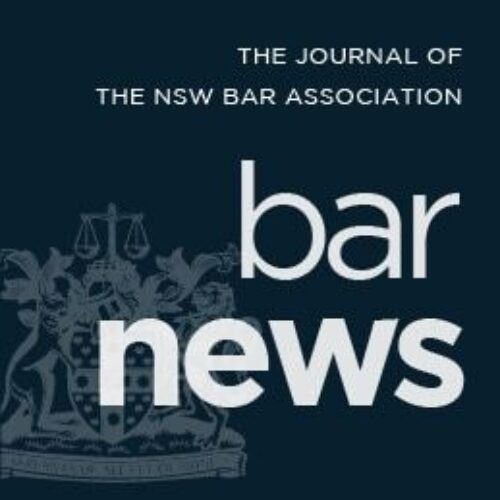- Autumn 2024
- Litigation and the Hero’s Journey

Kane’s Hire Pty Ltd v Anderson Aviation Australia Pty Ltd [2023] FCA 381, followed then by Gan v Xie [2023] NSWCA 163, ended the time-honoured (and, previously, court-approved) practice of ensuring that all evidence of conversations in New South Wales court proceedings was put in the form of direct speech. That practice had given generations of barristers settling affidavits a creative outlet in the form of all but mandating them to rearrange the sordid indirect speech in the affidavits with which they were provided in draft into dialogue worthy of the Bard himself. But, alas, no more.
This made me think: if the playwright inside me can no longer be given voice through the production of direct speech, what other possibilities exist to improve the qualities of affidavits as pieces of literature? Then I remembered the literary trope often hailed by the authors of books, when advising other authors how to write books, as a near universal panacea when constructing plots: ‘the Hero’s Journey’.
The Hero’s Journey was popularised by Joseph Campbell in his famed 1949 book, The Hero with a Thousand Faces. Campbell concluded from a study of the mythology of many cultures that most myths were based on the same basic plot structure, which he labelled ‘the Monomyth’, aka ‘the Hero’s Journey’. This structure was supposed to have an inherent deep psychological appeal to any reader, hence the advice to new writers that one can never do much wrong by adopting a thinly disguised version of this most ancient of plots.
So, of what does the Hero’s Journey consist? Precise formulations vary, but the gist is as follows:
1. The Call to Adventure. A problem arises that gives impetus to the Hero to journey into an ‘Other World’.
2. Refusal of the Call. The Hero is initially reluctant to embark upon the journey, out of fear of what it may entail.
3. Meeting with the Mentor. The Hero encounters a wise person who is familiar with the Other World. The Mentor acts as the Hero’s guide to the Other World, imparts knowledge, and provides an Other Worldly talisman to enable the Hero to cross the threshold between the worlds.
4. Crossing of the First Threshold. Equipped with boons provided by the Mentor, the Hero enters the Other World, wherein the adventure truly begins.
5. The Road of Trials. The Hero’s path through the Other World is not easy. Before the Hero can even reach the ultimate challenge, many difficulties must be met and overcome in their turn.
6. Temptation. The Hero is tempted to abandon the quest in exchange for an easy but lesser reward.
7. The Ordeal. Having eschewed the easy path, the Hero arrives at the greatest and most terrible ordeal, the climax of the struggle.
8. The Ultimate Boon. The Hero triumphs and obtains the prize that was the object of the quest.
9. The Return. The Hero faces further perils in taking the Ultimate Boon back from the Other World into the real world in which the quest began.
10. Transfiguration. The Hero has returned with the Ultimate Boon, which remedies the Hero’s initial problem. The Hero also experiences a personal transformation by reason of the questing experience.
After reviewing the above, however, I realised that there is really no need to seek to transform one’s client’s account of events into a version of the Hero’s Journey, as the process of litigation is itself the Hero’s Journey!
Think about it. The client plaintiff is the Hero with a problem that represents the Call to Adventure, but the client is hesitant: the Other World – of law – is unfamiliar, intimidating and costly. However, the client finds a lawyer Mentor who offers sage guidance and a magical talisman (called a ‘Statement of Claim’) to enable the crossing of the threshold into the world of adventure that is litigation.
Next comes the Road of Trials – a seemingly never-ending set of costly interlocutory battles that must be fought and won. Then, when the Ultimate Ordeal of a final hearing has almost been reached, the client is forced to undergo the temptation of mediation. An easy half-solution to the client’s problems is dangled before our Hero, a bait declined by only the most resolved.
The final hearing is a literal trial, in which the client and all witness-companions are cross-examined within an inch of their lives. Yet, since the client’s cause is a noble one, the client prevails and the Ultimate Boon is won: judgment for the plaintiff! But still the evil defendant may have some tricks up its sleeve, trying to rob the plaintiff of true victory via an appeal and/or resisting enforcement. Yet finally the plaintiff wins out – the struggle is over and the original problem is solved.
And, likely, after all of that, the client is no longer the same person as he or she was back before the litigation commenced. At the very least, the client is now a hero, a victor in the noblest of quests … BN
